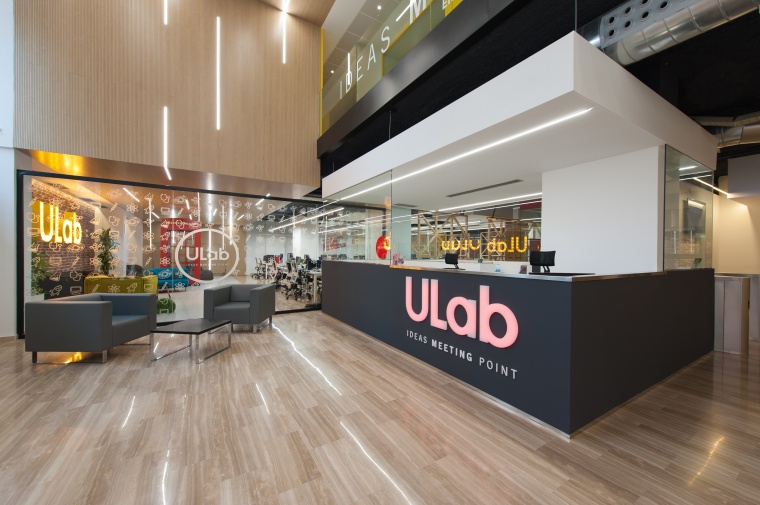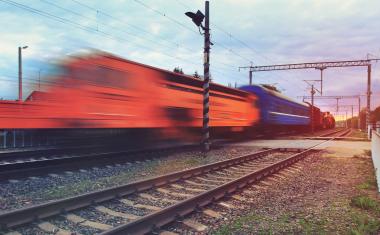Wireless Access Control Report 2018
In the early 1980s McKinsey projected that 900,000 mobile phones would be in use around the world by the turn of the century. The management consultancy undershot spectacularly: 90...



In the early 1980s McKinsey projected that 900,000 mobile phones would be in use around the world by the turn of the century. The management consultancy undershot spectacularly: 900,000 new subscribers were buying mobile phones every three days by 1999. Why? Because they failed to anticipate dramatic innovation and falling costs. Assa Abloy sponsors the ‚Wireless Access Control Report‘, prepared by IHS Markit on behalf of Ifsec Global. c. It stems from a survey of hundreds of EMEA professionals involved in the procurement, operation, deployment and maintenance of access control systems. We provide some excerpts and practical examples in this article, and the whole report can be downloaded free of charge using the link above.
Wireless communication has come a long way since the 80s, including in the access control arena. Communicating via NFC and, more commonly, Bluetooth Low Energy is a plethora of wireless readers, locks and tags currently available on the market. The emergence of such new communication technologies has already spurred the development of products that provide increasing amounts of user convenience. Many useful functions and facilities can now be easily – and securely – realized that we will soon be taking for granted. The report shows, however, that there is upward potential for their take-up at the moment. Those companies, organizations or private individuals who have already introduced wireless access technology are the ones who are benefiting early from the time and cost savings just waiting to be taken.
That‘s Swell
One of Spain’s newest co-working spaces, ULab’s vision incorporated the latest in security, accessibility and design to create a 21st-century business center. Wire-free SMARTair delivers real-time access control to accommodate both regular daily traffic and busy one-off events. Enrique Burgos, Director at ULab: „In addition to regular daily traffic [of around 100 staff], weekly traffic can almost multiply by ten if an event is held. We needed an access control system as flexible and convenient as SMARTair.“
Here‘s a prime example of how flexible wireless access control can be. It would be a logistical and security nightmare to have to issue keys to everyone attending in-house events. Probably the only sensible solution in such an environment is a wireless solution, and even that has to have the flexibility to cope with dozens of different user profiles. Regular staff can continue to use their credential of choice while ‚temporary‘ staff can use specially-issued cards, tokens or a mobile phone app to move freely around their particular authorized areas. Sudden changes in needs pose no particular problem for the system administrator either because, no matter where he or she is, they can remotely configure system components and parameters as necessary via their mobile device, even out of regular working hours.
Retrofit and Integrate
The ‚Wireless Access Control Report‘ finds that systems integration is a recurring theme in marketing materials for physical security products (although one respondent said that vendors have not always seemed to grasp its importance) and, in conversations among security professionals, forty-three percent said easier integration with existing access control systems would make them more likely to upgrade. There appears to be an elephant in the room when it comes to integration because it will probably be much easier than potential users actually expect.
For example, after 20 years, Lund University’s Faculty of Law was looking to upgrade its access control system. Aperio battery-powered escutcheons and cylinders with card readers are now fully integrated with Pacom’s Unison system. The Aperio locks work with the existing Mifare smart-cards, so there was no need for 42,000 students and 7,500 staff to return their smart-cards for reprogramming, or even to visit update readers to reactivate their permissions. Every door or card is still managed centrally from a single administration interface. Magnus Svensson, Infrastructure Manager at Lund University, said, „Aperio has proven to be very cost effective. We have been able to radically reduce the time we spend on user management and system administration.“
Aperio devices enable access control providers to cost-effectively integrate non-wired doors with mechanical locks into new or existing access control systems. Doors merely need to be fitted with battery-powered, RFID-equipped Aperio locks, cylinders, escutcheons or the new H100 Aperio handle.
Compatible As Standard
The easiest, most cost-effective path towards integrated systems is to develop devices and technologies on open platforms and to agreed standards, including the OSS–Standard Offline from the Open Standards Security Association. Under this standard, each lock manufacturer has its own approach to writing and reading cards, but customers installing offline locks from brands that subscribe to the OSS–SO are guaranteed interoperability. „Interoperability is critically important for any end-user investing in new or upgraded access control,“ says Matthias Weiss, product manager Aperio at Assa Abloy EMEA. „They need to plan for eventualities they may not even see yet, and open standards allow them to do that. Ending reliance on a single, proprietary solution makes installed access control more flexible.“
Incremental Upgrade
Russell Wagstaff, Director for Commercial Access Solutions at Assa Abloy EMEA said, „Among the many advantages of wireless discussed in the report [...] removing the need to cable every door makes it much easier and more economical to bring many more doors into your access system. So, wireless technology can upgrade your building’s security in an instant.“ When progressing from a set of purely mechanical locks to a modern wireless access control environment, it can sometimes make sense to do a ‚partial upgrade‘ by fitting electronic locks just to some doors first of all – for example, when factory buildings or offices are being sequentially refurbished. More can always be added later in the safe knowledge that they are completely compatible and simply extend the existing system.
And it‘s not just doors for people that can benefit: the new report forecasts that market growth in wireless locks for ‚non-door‘ applications (such as parking gates, server racks, lockers, cabinets and lifts) will be higher than that for doors. Wireless technology is especially suited to these ‚non-doors‘, partly because of convenience. The more applications that can be secured and unlocked with a single credential, the more convenient it is for site users. Facility managers benefit from the wider scope of their access system because these ‚non-door‘ devices are also wireless. Access control can easily extend outdoors to padlocks for gates, machinery locks or storage lockers. Battery-powered Cliq mechatronic padlocks, for example, are popular with critical infrastructure providers who often have dispersed, outdoor sites where traditional cabled access control is not a realistic option. With the right lock, these can all be secured within the same access control system as the front door.
The Wireless Access Control Report 2018
In the 2018 survey – based on research conducted by IFSEC Global and Assa Abloy – an overwhelming majority (96%) agreed it was important to have access control points and systems fully integrated across the building, 67% of those opting for „very important“. Responses are similarly distributed when it comes to the value of integrating access control with other security systems (96% and 65%). Organizations are also increasingly thinking beyond local or security-only integrations. Currently, only 6% of installed electronic access systems are fully wireless; a further 31% include a mix of wired and wireless devices. Installers are more convinced than customers about the benefits of wireless access control, but it’s apparently not easy to convince customers of the benefits compared to wired. You can download facts, insights and analysis on the EMEA access control market from the 22-page Assa Abloy-sponsored report, free of charge, via this link: Download Report here
most read

What Is the Entry/Exit System?
How Europe’s Smart Border Tech Is Reshaping Security and Identity Management: A Security Guide for Professionals and Travelers

How Optex LiDAR Technology Is Making UK Railway Crossings Safer for Pedestrians and Drivers
Optex LiDAR boosts UK rail safety, detects obstacles at crossings to prevent accidents and support enforcement











